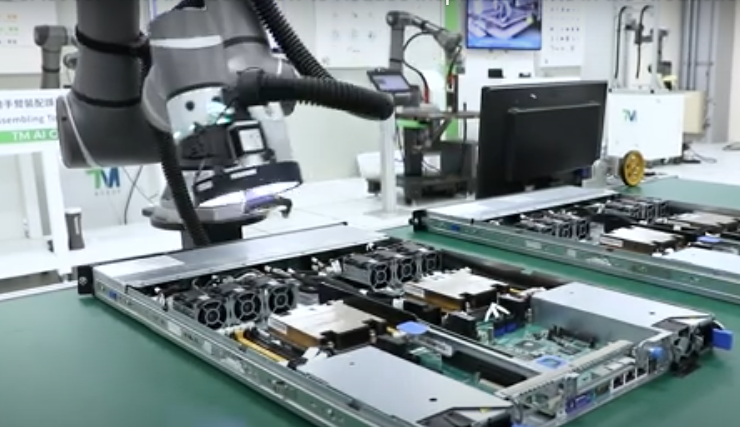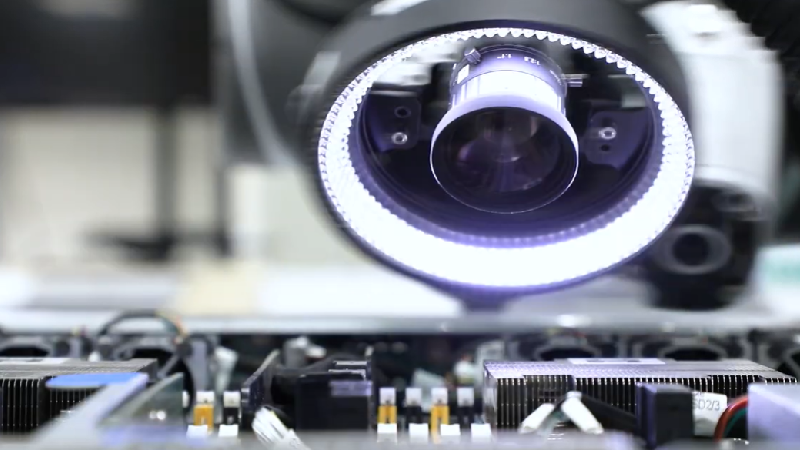High-Speed ‘Flying Trigger’ Inspection Sets a New Benchmark for Inline Metrology
A recent demonstration of a collaborative robot and vision-inspection system highlights a major step forward in inline metrology. Unlike traditional inspection systems, where robots must stop at each measurement point, this new setup allows the robot to move continuously while capturing images of a stationary part. This ‘flying-trigger’ capability accelerates inspection without compromising accuracy, opening new possibilities for smart manufacturing.
 In conventional systems, a robot moves incrementally to each measurement position, pausing at every point while a camera or sensor captures data. This stop-and-go method, while precise, limits throughput and can create bottlenecks on the production line. With flying-trigger inspection, the robot synchronizes its motion with the vision system, capturing high-speed images while in continuous movement. The part remains fixed, eliminating errors due to vibrations or repositioning, while AI-based analysis processes the images in real time. The result is a dramatic reduction in inspection time, with manufacturers reporting improvements of up to 40–50 percent.
In conventional systems, a robot moves incrementally to each measurement position, pausing at every point while a camera or sensor captures data. This stop-and-go method, while precise, limits throughput and can create bottlenecks on the production line. With flying-trigger inspection, the robot synchronizes its motion with the vision system, capturing high-speed images while in continuous movement. The part remains fixed, eliminating errors due to vibrations or repositioning, while AI-based analysis processes the images in real time. The result is a dramatic reduction in inspection time, with manufacturers reporting improvements of up to 40–50 percent.
Technically, the system relies on tight integration between robot motion, camera timing, and lighting. High-speed imaging captures sharp, blur-free images even as the robot moves, while AI algorithms detect defects instantly. The approach allows multiple measurements to be taken during a single pass, combining precision, speed, and efficiency in a way that traditional stop-and-measure systems cannot match.
For manufacturers, the benefits are clear. Throughput increases without sacrificing measurement accuracy, and quality control becomes a seamless part of the production flow. For metrology professionals, the shift highlights a broader trend: inspection is no longer confined to dedicated stations but is becoming integrated into production itself. Engineers now need to consider robot path planning, lighting, AI model performance, and real-time data processing alongside traditional measurement concerns.
The flying-trigger system also generates richer data streams, logging every measurement in real time. This capability supports digital thread initiatives, traceability, and tighter quality integration across the manufacturing process. While traditional CMMs and other tactile or optical systems remain critical for certain high-precision tasks, inline, continuous-motion inspection offers a complementary solution for fast, repeatable, and reliable quality control.
Looking ahead, challenges include scaling the approach for complex, high-mix production, maintaining AI model reliability across different parts, and ensuring compliance with regulatory and traceability standards. However, the demonstration shows a clear path toward more intelligent, agile, and connected production lines, where measurement, vision, and automation converge to deliver faster and smarter quality assurance.
Flying-trigger inspection signals a fundamental shift in metrology: precision no longer requires stop-and-go motion. By moving continuously while inspecting static parts, manufacturers can combine speed with accuracy, laying the groundwork for truly embedded, real-time quality control in modern production environments.
For more information: www.tm-robot.com








